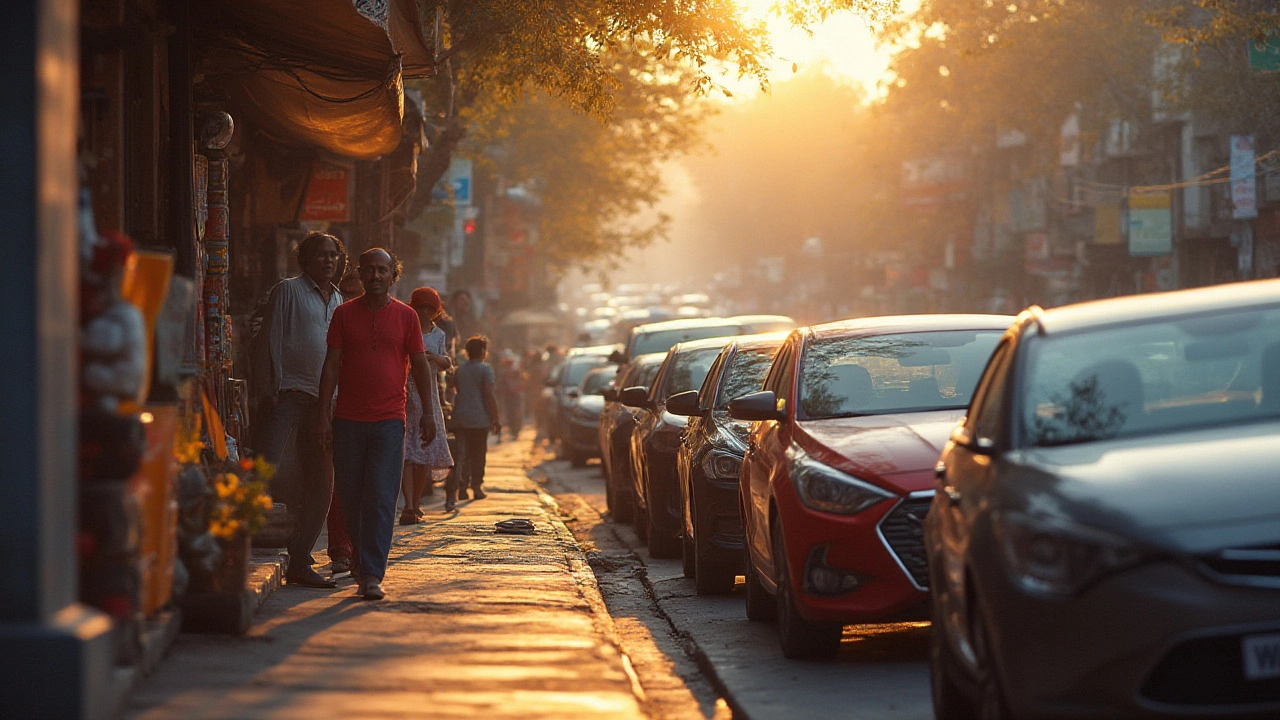Ever heard someone say their car “just keeps going” no matter what? Chances are, they’re talking about an Asian model. While some folks argue over which country makes the best cars, drivers across Asia—from Tokyo to Jakarta—tend to agree on one thing: reliability matters more than ever. The last thing anyone wants is a car that leaves you stranded in Monsoon traffic or requires a second mortgage just to repair. So what really is the most reliable car in Asia, and why do people swear by certain models year after year?
Understanding Reliability in the Asian Car Scene
If you ask a mechanic in Bangkok or a taxi driver in Seoul what “reliable” means, odds are, they’ll say it’s a car that starts every time, is cheap to fix, and doesn’t turn small problems into massive headaches. But reliability isn’t just about luck. Asian brands earned their reputation through clever engineering, strict quality control, and a focus on value for money. That’s why names like Toyota, Honda, and Hyundai keep popping up in used car lots—because their older models still run like champs.
Reliability is tracked with hard numbers. Data from Japan’s Ministry of Land, Infrastructure, Transport and Tourism shows Toyota has consistently led annual customer satisfaction and low breakdown records for over a decade. A 2024 reliability report by J.D. Power Asia found Toyota, Honda, and Suzuki leading the region for fewest repairs per 1,000 vehicles. These companies don’t just wing it. They fine-tune designs for years, test them in wild weather, and build engines that outlast trends and fads.
Let’s get specific. Toyota Corolla has a legendary run in Asia, especially in countries like India, Singapore, and the Philippines. Reviews from owners mention these cars are “almost boringly dependable.” Honda’s Civic, meanwhile, has become a go-to choice for young professionals in Malaysia and Thailand, combining decent fuel economy with virtually zero surprise breakdowns in the first ten years of ownership. And over in Korea, Hyundai’s Elantra and Kia’s Sportage routinely sell in droves because they just don’t quit.
But reliability isn’t just luck of the draw. It comes down to habits: stick to regular services, use decent fuel, and don’t treat your car like a rally racer, and even a budget model can outlive flashier rides. Still, some brands have a clear head start, thanks to decades of learning and improvement.
Why Asian Cars Dominate Reliability Rankings
There’s a reason folks joke that a Toyota runs until the wheels fall off. The secret is in the way they build these cars. Asian car companies, especially Japanese and, more recently, Korean brands, have made “kaizen”—continuous improvement—a mantra. Instead of reinventing the wheel with every new model, they tweak small things every year based on what goes wrong and what lasts.
This practice means fewer major recalls and fewer bugs in new releases. For example, Toyota has kept its flagship models’ engines and transmissions largely unchanged except for efficiency tweaks, because, well, why fix what isn’t broken? Honda still uses naturally aspirated engines in many Asian models because they’re simpler to maintain and tend to last longer.
Design is one piece of the puzzle, but manufacturing is where the magic really happens. High-quality, corrosion-resistant steel panels, overbuilt engine blocks, and tough chassis mean these cars can handle Asia’s potholes, wild weather, and traffic jams without losing their cool. In countries like Vietnam and Indonesia, where bumpy roads are the norm, this kind of tough build pays off big time.
Besides, parts are everywhere. Pop into a backstreet garage in Manila or Dhaka, and you’ll find shelves of Toyota, Suzuki, or Hyundai spares at prices that won’t sting. Compare this with European imports, where a single cracked headlight can cost more than a month’s rent. That’s why, according to data from CarDekho India, Toyota and Maruti Suzuki dominate the second-hand market, with models like the Innova and Alto clocking over 300,000 km and fetching solid resale prices.
Long-term owners and taxi drivers across the region back up these stats. Ask around, and you’ll hear stories of Corollas and Accords crossing 400,000 kilometers without major engine work. Many fleet operators keep records, and you’ll see the same models reaching these massive numbers again and again. If you’re looking for a car that won’t bail on you, chances are it’s made by a company with a track record, not just clever marketing.

The Standout Models: A Closer Look at Asia’s Champions
So, which rides should you actually consider if you don’t want any drama? Here’s a look at some of the best-known, most reliable cars built or sold in Asia—and the real-world proof behind the reputation:
- Toyota Corolla: Not exciting, but practically unbreakable. Built in massive numbers, with engines designed for punishing heat and traffic. Gets cheap parts and rarely surprises its owners with mechanic bills.
- Honda Civic: Compact, fuel efficient, and engineered with precision. Known for going over 300,000 km with just routine engine oil changes and basic care.
- Suzuki Swift: A favorite for urban drivers all over Asia. Suzuki models are legendary in India, Bangladesh, and Pakistan for their simplicity and ease of repair.
- Hyundai Elantra & Kia Sportage: Korean brands forced the big Japanese names to step up, thanks to clever tech and solid reliability. Elantra’s transmission and Sportage’s underbody rust resistance get special mentions from fleet owners in Korea and the Middle East.
But let’s not just name-drop. Data backs it up. Here’s a quick look at some models and their average minimum lifespans (when maintained properly):
| Model | Country/Popular Region | Average Lifespan (km) | Affordable Parts |
|---|---|---|---|
| Toyota Corolla | Japan/SE Asia | 400,000+ | Yes |
| Honda Civic | Japan/Malaysia/India | 350,000+ | Yes |
| Suzuki Swift | India/Bangladesh | 300,000+ | Yes |
| Hyundai Elantra | Korea/Middle East | 350,000+ | Yes |
| Kia Sportage | Korea/Philippines | 300,000+ | Yes |
What’s wild is that many of these cars keep their cool even when their odometer spins well past what most of us see in a lifetime of driving. Taxi fleets, delivery drivers, and rural families across Asia tell the same story: change the oil and take it easy on the clutch, and these cars become part of the family.
But don’t just take my word for it. As Motoring Asia’s chief editor, Junji Watanabe, once put it:
“I’ve tested cars from Tokyo to Jakarta. The Toyota Corolla’s reliability is almost boring—it never gives you anything to write about, and that’s the highest praise you can give in this business.”
Even in 2025, new contenders eye the crown. Electric models like BYD Dolphin and NIO ET5, both made in China, are impressing with low running costs and simple, reliable drivetrain tech. While they haven’t been around long enough to prove 300,000 km potential, the early data’s promising, and buyers across Vietnam and Thailand are curious to see how they age on tough roads.
The Smart Way to Choose a Reliable Car in Asia
Buying reliable isn’t about luck, it’s about focus. Here are a few real-world tips to keep you out of trouble whether you’re looking at a used ride in Manila or a brand-new deal in Seoul:
- Research Resale Values. If a model keeps its value after five or ten years, it’s because buyers trust it won’t die on them. The Toyota Innova, Honda City, and Suzuki Alto are legends in India for this reason alone.
- Stick to Mainstream Brands. While there are flashy new players (and some grey-market imports), mainstream Japanese and Korean names have service networks in nearly every Asian city. That means affordable, quick fixes when things do finally wear out.
- Check Service Histories. A reliable make can still let you down if someone skipped oil changes or thrashed the gearbox. Always ask for service proof and avoid cars with patchy pasts.
- Match the Car to Your Needs. If you’re in a city, smaller models like Suzuki Wagon R or Honda Jazz make parking and running costs a breeze. Rural or family use? Lean toward the Toyota Fortuner or Innova—legendary for durability even on rough roads.
Lastly, keep in mind no machine is perfect forever. Even the toughest Asian models need love—changing filters, rotating tires, and washing off salt after monsoon floods or winter snow. But go with a proven player, look after it, and you can expect quiet, drama-free journeys for longer than most folks spend in a single job.
